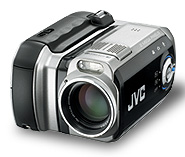
| Video Technology Magazine | November 2004 |
We now people are starting to want to use their video editing systems with SAN and NAS storage arrays and still expect and want to be frame accurate., After all when recording off of a FireWire device and your network drives can not keep up this is bad. One observation thou is Avid on the Mac was able to deal with storage delays better then Final Cut Pro. Apparently they have better buffering. Most Remote file mount systems support UDP based communication NFS, and CIFS (Microsoft Windows uses this), CIFS also support TCP/IP across the Internet backbone, which has been responsible for many security problems. Well now there are iSCSI and of course it a block device over TCP/IP and comes with all the problems of video over TCP.
Some comments from an IETF perspective:
Capturing video is like drinking out of a firehose.
Good thread on the subject, from the MythTV folks The FCC says it has power over anything that can receive and play a digital file
A Paper from Intel More White papers on this subject
DALSA Digital Cinema Center opened recently 6160 Variel Ave Woodland Hills, California just outside of Los Angeles. The new full service rental facility has 12,000 square foot of space. This will be home to the DALSA Origin, the world's first and only 4K digital motion picture camera. The Center will also be the first rental operation in Los Angeles to provide a full spectrum of digital cameras, accessories and services.
Dalsa Digital Cinema
This stuff is uses all the time in highway cones, the lines on the road, stop signs, license plates, and the registration stickers(here in California), Firemans uniforms and helmets.
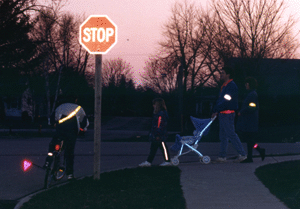
All really cool stuff but what does this have to do with video you ask. Well for many machine vision applications, it's about signal to noise ratio. Make the object your interested in stand out in the image.
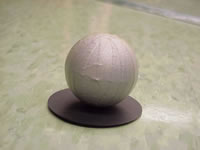
Reflective Marker used for Motion capture For CCTV these can be used to mark location on the floors or walls to increase the sensitivity of the motion detection, or to act like many electric eyes.
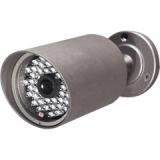
CCTV Camera with IR Led's for illumination 3M part numbers 3000X, 3870, 7590, 7610, 7800 are the interesting ones. When testing with one of those IR illuminated CCTV cameras I found the 7610 to be the best. I found you have to open the cameras up and place a piece of black electrical tape of the light sensor to keep the IR LED's power up continuously. But with this done, even in bright sunlight the tape stands out brightly from other objects in a scene. One project I worked on a long long time ago was to Identify cars as they went past for things like security gates, parking garages, toll roads and bridges. After spending much time on developing a totally clear/transparent plastic bumper stick with an IR invisible barcode on it, I realized it was just far easier to use a camera with LED around the lens to read the license plates directly. So when the E-ZPass, FAST LANE, Fastrak, SunPass and other Microwave based RF transponder systems took over the market for Electronic Toll Collection on roads and bridges I was shocked and amazed. The per car costs are higher, the need for replacing batteries and other failures are much worse then just using a PC and video camera to OCR the license plates directly. The retroreflective coatings put on most license place make this a snap, the red light enforcement cameras prove this. example of violation notice
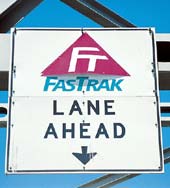


Some companies are selling sprays that supposidly block the enforcement cameras by making the entire license plate reflective. Don't know if it true, but if such a paint in a can did work this would be very usefull stuff for digital imaging. 
3M Scotch, High-Gain Reflective Sheeting and Tapes
3M and other companies also make retroreflective paints and fabrics.
Traditional blue-screen "chromakey" technique is now starting to be replaced by new keying technology based on retroreflective fabric, lit by Blue or Green Leds place in a ring around the camera lens. The technique was pioneered by the BBC and was being resold for a while by GlobalStreams. Nice link here and here Chromatte Fabric and light rings
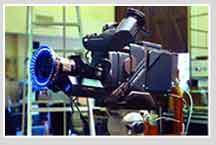
|
Singulus, Sony Team Up on Blu-Ray Development Film Studios Cast Vote for HD DVD Studios taking sides in fight for successor to the DVD HD-DVD Wins Support of 4 Studios 4 studios back Toshiba's HD DVD
It can capture stills at 1600x1200 UXGA Resolution, and full motion video at 720x480/60i up to 60 Minutes in High Quality Mode. MPEG2 video or 120 Minutes of normal Quality(4Mbps) on a 4GB MicroDrive Harddisk storage.
The camera also come with CyberLink DVD software, including PowerDirector Express, a simple Non-Linear Editor.
SlashDot story on "TV On Cellphones Ever Closer" "Seems that the new breed of cell-phones are being readied to receive digital TV. The standard has been finalized and handsets are in test. The emergence of DVB-H explains a puzzling purchase made last year by Crown Castle of Houston, Texas. The company, which runs the BBC��s transmitter network in the UK, paid $12 million for a 5-megahertz slice of coast-to-coast radio spectrum in the US. At the time no one knew why. But Crown Castle transmitters near Pittsburgh are already broadcasting DVB-H to prototype Nokia mobile TV phones. That purchase may turn out to be an amazing bargain, considering other operators paid billions for 3G licenses which were originally meant to deliver video services." Links:DVB-H, OFDM demodulation and MPE FEC IP data correction My Original Article There has been a recent increase in the amount of buzz and buzzwords about Video on Cellphones. Ton's of news articles , few which really mention any protocols or standards, but lots of future possibilities. DAB, DMB, DVB-H, DVB-T and ASTC DTV receivers are all being build into cellphones. There is also the 3GPP stuff that is already working and then the MMS (Multi-Media Messaging Service), And lets not forget all the new Digital protocols, UMTS HSDPA, WiMax, GPRS, EDGE, W-CDMA, GPS, (E)GPRS, WLAN. I mean if I can't keep up with these new acronyms, how can the consumer or even application developers! ASTC DTV, is the new US Digital TV standard and DVB-T is the European standard for the same. They call is Terrestrial Broadcast, which means it used old fashioned Radio towser on hills and tall building. Several companies are working to receive this direct onto cell phones.
Then there is
DMB (Digital Multimedia Broadcasting): provides CD-quality-level sounds, data and video services via mobile handsets, while their holders move or stay in certain places. It is classified into terrestrial DMB and satellite DMB according to transmission means.
DAB processor to support Korean DMB standard
LG has developed a DMB(Digital Multimedia Broadcast) Chipset, is not expected to be commercialized before next spring LG Electronics Unveils DMB-Receiving Phone LG Electronics Unveils World's First Terrestrial DMB-Receiving Mobile Phone
But Does Anyone Want Mobile TV? If Qualcomm Builds Mobile TV, Will Viewers Come? Crown Castle, Nokia pilot mobile TV in US over DVB-H DVB-H is a standard specified by the DVB Organization specifically for the transmission of TV-like content and data to handheld devices, such as mobile phones, which have unique requirements in terms of power consumption, screen-size and mobility.
Richard Templeton, chief executive of Texas Instruments, said that he expects that cellphones with built-in digital televisions run by the company's chip will be on sale in the United States in 2007. The processor, code-named Hollywood, is being tested now. Texas Instruments is the world's biggest maker of mobile-phone processors. The chips will be available in phones in Japan and Europe in 2006, with "our best estimate" for U.S. distribution in 2007. Cellphone addition: high-definition TV I'm sure this one is taken out of context.
Qualcomm has established a subsidiary, MediaFLO USA, to deploy and operate a nationwide network operating in the 700 MHz spectrum to deliver video and audio programming to 3G mobile phones.
Vodafone will begin offering "mobisodes", one-minute TV show episodes this January in the UK. They have partnered with Twentieth Century Fox to product a Cell Phone version of the TV series "24". Fox to provide TV series for cellphones
MacAvid - (they have many products)Apple, Final Cut Pro 4 PC - WinTelAvid XpressAdobe Premier 6.5 and After Effects Pinnacle Studio 9 Pinnacle Liquid Edition 6, does HD
Others out there?
Not to put a plug in for these guys but BlueFish444 Sells high end PC for video editing. I was trying to get them to do a deal with Nisvara Inc. a startup I help found that builds Silent computers.
|
|||||||||||||||||||
Copyright © 2004, John L. Sokol
|
|
 Many motion capture systems use multiple cameras with LED rings around the lens, and the actor has little Styrofoam balls cover in the 3M reflective tape attached to the joints of his body to track his motion.
Many motion capture systems use multiple cameras with LED rings around the lens, and the actor has little Styrofoam balls cover in the 3M reflective tape attached to the joints of his body to track his motion. 